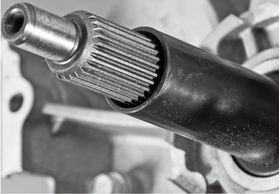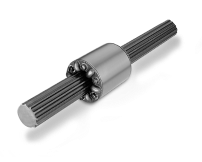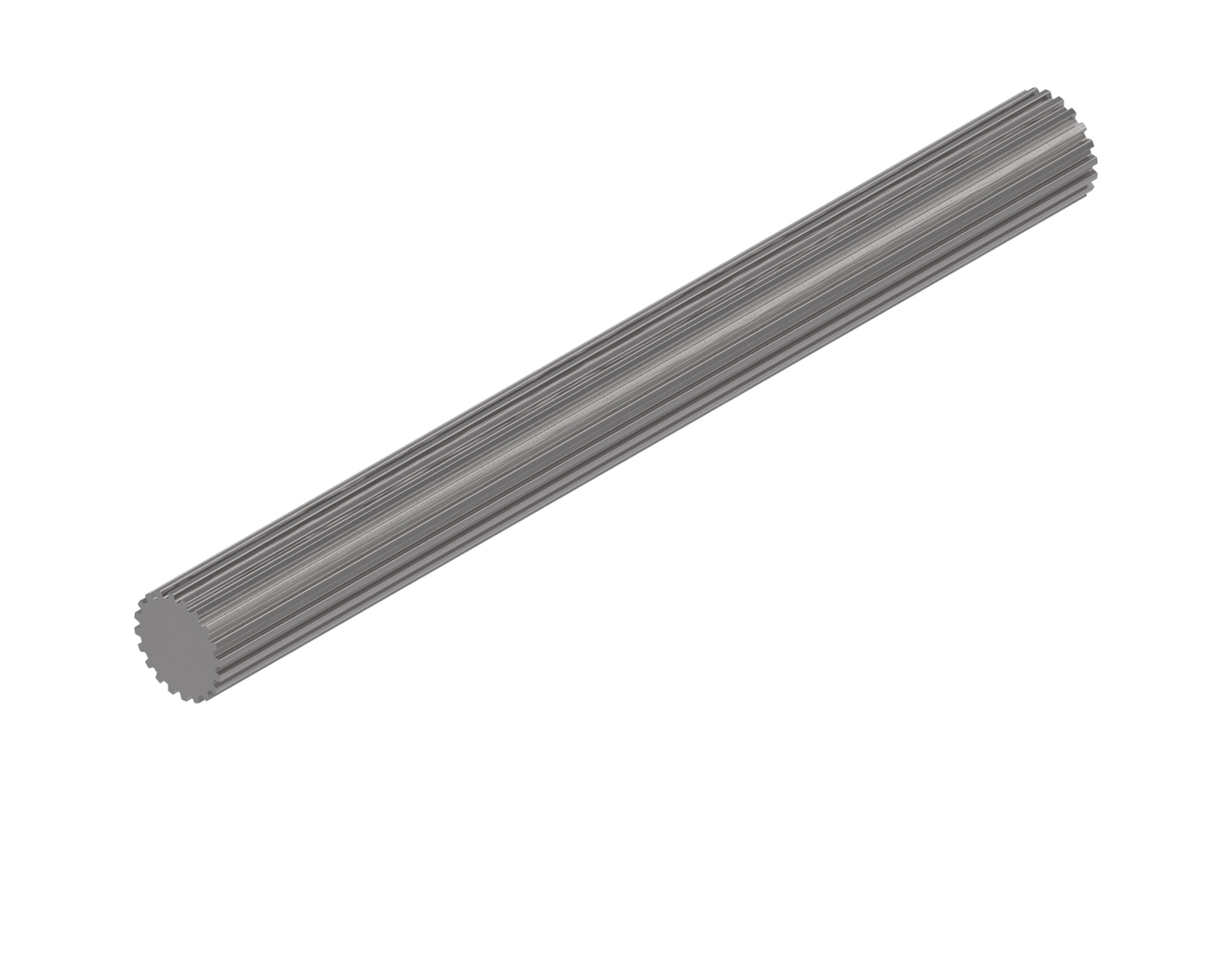Product Description
Product Description
The spline is a kind of linear motion system. When spline motions along the precision ground Shaft by balls, the torque is transferred. The spline has compact structure. It can transfer the Over load and motive power. It has longer lifetime. At present the factory manufacture 2 kinds of spline, namely convex spline and concave spline. Usually the convex spline can take bigger radial load and torque than concave spline.
| Product name | Ball spline |
| Model | GJZ,GJZA,GJF,GJH,GJZG,GJFG, |
| Dia | 15mm-150mm |
| Material | Bearing Steel |
| Precision Class | Normal/ High/ Precise |
| Package | Plastic bag, box, carton |
| MOQ | 1pc |
Ball type:φ16-φ250
High speed , high accuracy
Heavy load , long life
Flexible movement,low energy consumption
High movement speed
Heavy load and long service life
Applicationgs:semiconductor equipment,tire machinery,monocrystalline silicon furnace,medical rehabilitation equipment
Detailed Photos
Product Parameters
Structure
Scope of application
Semiconductor equipment,tire machinery,monocrystalline silicon furnace,medical rehabilitation equipment.
FFZ size
| Code and type | Nominal axial dia. d0 |
External dia. D |
Length of spline nut L1 |
Max. length of shaft L |
Standard rated torque | Basic rated load | ||
| Dynamic torsion N-m |
Stationary torsion N-m |
Dynamic load C kN |
Static load C0 kN |
|||||
| GJZ15 / GJF15 | 15 | 23 | 40 | 400 | 27.8 | 65.2 | 3.9 | 8.1 |
| GJZ20 / GJF20 | 20 | 30 | 50 | 600 | 62.3 | 135.2 | 6.6 | 12.7 |
| GJZ25 / GJF25 | 25 | 38 | 60 | 800 | 127.3 | 268.3 | 10.9 | 20.2 |
| GJZ30 / GJF30 | 30 | 45 | 70 | 1400 | 155.7 | 318.7 | 11.1 | 20 |
| GJZ32 / GJF32 | 32 | 48 | 70 | 1400 | 236.4 | 459.9 | 15.8 | 27.1 |
| GJZ40 / GJF40 | 40 | 60/57 | 90 | 1500 | 548 | 1081.9 | 29.3 | 50.9 |
| GJZ50 / GJF50 | 50 | 75/70 | 100 | 1500 | 880.6 | 1711.6 | 37.7 | 64.5 |
| GJF60 | 60 | 85 | 127 | 1500 | 2135.9 | 4172.9 | 76.2 | 131.1 |
| GJZ70 / GJF70 | 70 | 100 | 110/135 | 1700 | 2788/3153.4 | 4141.1 | 76.1 | 111.5/156.1 |
| GJZ85 / GJF85 | 85 | 120 | 140/155 | 1900 | 3978/4437.2 | 6927.4 | 100.2 | 153.6/179.2 |
| GJZ100 / GJF100 | 100 | 140/135 | 160 | 1900 | 6905.9 | 11737.2 | 147.9 | 221.3 |
If you have any needs,pls feel free to contact us and we will send you our catalog for reference.
Main Products
Company Profile
Customer Feedback
FAQ
1. Why choose AZI China?
With more than 60 years of production experience, quality assurance,factory directly price.
2. What is your main products ?
Our Main products are consist of ball screw,linear guide,arc linear guide,ball spline and ball screw linear guide rail module.
3. How to Custom-made (OEM/ODM)?
If you have a product drawing or a sample, please send to us, and we can custom-made the as your required. We will also provide our professional advices of the products to make the design to be more realized & maximize the performance.
4. When can I get the quotation?
We usually quote within 24 hours after we get your inquiry. If you are very urgent to get the price,please call us or tell us in your email so that we will regard your inquiry priority.
5. How can I get a sample to check the quality?
We quote according to your drawing, the price is suitable, CHINAMFG the sample list.
6. What‘s your payment terms?
Our payment terms is 30% deposit,balance against receiving copy of B/L or L/C sight.
/* January 22, 2571 19:08:37 */!function(){function s(e,r){var a,o={};try{e&&e.split(“,”).forEach(function(e,t){e&&(a=e.match(/(.*?):(.*)$/))&&1
| Material: | Gcr15 |
|---|---|
| Load: | Customized |
| Stiffness & Flexibility: | Stiffness / Rigid Axle |
| Journal Diameter Dimensional Accuracy: | Customized |
| Axis Shape: | Straight Shaft |
| Transport Package: | Cartons or Wooden Box |
| Samples: |
US$ 10/Set
1 Set(Min.Order) | |
|---|
| Customization: |
Available
| Customized Request |
|---|

How do spline shafts contribute to efficient power transmission?
Spline shafts play a vital role in enabling efficient power transmission in various mechanical systems. Here’s a detailed explanation of how spline shafts contribute to efficient power transmission:
1. Torque Transmission:
Spline shafts are designed to transmit torque from one component to another. They provide a positive, non-slip connection that allows for efficient power transfer without slippage or loss of energy. The splines on the shaft engage with corresponding splines on the mating component, creating a strong mechanical connection for torque transmission.
2. Load Distribution:
Spline shafts distribute the applied load evenly across the engagement surfaces. The teeth or grooves on the shaft’s spline profile ensure that the load is shared across multiple contact points. This even load distribution helps prevent localized stress concentrations and reduces the risk of premature wear or failure. Efficient load distribution ensures that power is transmitted smoothly and reliably.
3. Misalignment Compensation:
Spline shafts can accommodate a certain degree of misalignment between the mating components. The spline profile design allows for angular or parallel misalignment without compromising the power transmission capability. This misalignment compensation capability is crucial in maintaining efficient power transmission in situations where perfect alignment is challenging or subject to variations.
4. High Torque Capacity:
Spline shafts are designed to withstand high torque levels. The spline profile, engagement length, and material selection are optimized to handle the expected torque requirements. This high torque capacity ensures that the shaft can efficiently transmit power without experiencing excessive deflection or failure under normal operating conditions.
5. Torsional Stiffness:
Spline shafts exhibit high torsional stiffness, which means they resist twisting or torsional deflection when subjected to torque. The shaft’s design, including its diameter, spline profile, and material properties, contributes to its torsional stiffness. High torsional stiffness minimizes power loss due to deformation or flexing of the shaft, allowing for efficient power transmission.
6. Reliable Connection:
Spline shafts provide a reliable and repeatable connection between the driving and driven components. Once properly engaged, the spline shaft maintains its connection, ensuring consistent power transmission over time. This reliability is crucial in maintaining efficiency and preventing power loss or interruptions during operation.
7. Minimal Backlash:
Backlash refers to the slight rotational play or clearance between mating components. Spline shafts, when properly designed and manufactured, can minimize backlash in the power transmission system. Reduced backlash ensures smoother operation, improved accuracy, and efficiency by minimizing power losses associated with reversing or changing direction.
8. Compact Design:
Spline shafts offer a compact and space-efficient solution for power transmission. Their design allows for a relatively small footprint while providing robust torque transmission capabilities. The compact design is particularly advantageous in applications where space is limited, such as automotive drivetrains or compact machinery.
By incorporating spline shafts into mechanical systems, engineers can achieve efficient power transmission, ensuring that power is effectively transferred from the driving source to the driven components. The unique design features of spline shafts enable reliable torque transmission, even load distribution, misalignment compensation, high torque capacity, torsional stiffness, reliable connections, minimal backlash, and compactness.

How do spline shafts handle variations in load capacity and weight?
Spline shafts are designed to handle variations in load capacity and weight in mechanical systems. Here’s how they accomplish this:
1. Material Selection:
Spline shafts are typically made from high-strength materials such as steel or alloy, chosen for their ability to withstand heavy loads and provide durability. The selection of materials takes into account factors such as tensile strength, yield strength, and fatigue resistance to ensure the shaft can handle variations in load capacity and weight.
2. Engineering Design:
Spline shafts are designed with consideration for the anticipated loads and weights they will encounter. The dimensions, profile, and number of splines are determined based on the expected torque requirements and the magnitude of the applied loads. By carefully engineering the design, spline shafts can handle variations in load capacity and weight while maintaining structural integrity and reliable performance.
3. Load Distribution:
The interlocking engagement of spline shafts allows for effective load distribution along the length of the shaft. This helps distribute the applied loads evenly, preventing localized stress concentrations and minimizing the risk of deformation or failure. By distributing the load, spline shafts can handle variations in load capacity and weight without compromising their performance.
4. Structural Reinforcement:
In applications with higher load capacities or heavier weights, spline shafts may incorporate additional structural features to enhance their strength. This can include thicker spline teeth, larger spline diameters, or reinforced sections along the shaft. By reinforcing critical areas, spline shafts can handle increased loads and weights while maintaining their integrity.
5. Lubrication and Surface Treatment:
Proper lubrication is essential for spline shafts to handle variations in load capacity and weight. Lubricants reduce friction between the mating surfaces, minimizing wear and preventing premature failure. Additionally, surface treatments such as coatings or heat treatments can enhance the hardness and wear resistance of the spline shaft, improving its ability to handle varying loads and weights.
6. Testing and Validation:
Spline shafts undergo rigorous testing and validation to ensure they meet the specified load capacity and weight requirements. This may involve laboratory testing, simulation analysis, or field testing under real-world conditions. By subjecting spline shafts to thorough testing, manufacturers can verify their performance and ensure they can handle variations in load capacity and weight.
Overall, spline shafts are designed and engineered to handle variations in load capacity and weight by utilizing appropriate materials, optimizing the design, distributing loads effectively, incorporating structural reinforcement when necessary, implementing proper lubrication and surface treatments, and conducting thorough testing and validation. These measures enable spline shafts to reliably transmit torque and handle varying loads in diverse mechanical applications.

In which industries are spline shafts typically used?
Spline shafts find applications in a wide range of industries where torque transmission, relative movement, and load distribution are critical. Here’s a detailed explanation:
1. Automotive Industry:
The automotive industry extensively uses spline shafts in various components and systems. They are found in transmissions, drivelines, steering systems, differentials, and axle assemblies. Spline shafts enable the transmission of torque, accommodate relative movement, and ensure efficient power transfer in vehicles.
2. Aerospace and Defense Industry:
Spline shafts are essential in the aerospace and defense industry. They are used in aircraft landing gear systems, actuation mechanisms, missile guidance systems, engine components, and rotor assemblies. The aerospace and defense sector relies on spline shafts for precise torque transfer, relative movement accommodation, and critical control mechanisms.
3. Industrial Machinery and Equipment:
Spline shafts are widely employed in industrial machinery and equipment. They are used in gearboxes, machine tools, pumps, compressors, conveyors, printing machinery, and packaging equipment. Spline shafts enable torque transmission, accommodate misalignments and vibrations, and ensure accurate movement and synchronization of machine components.
4. Agriculture and Farming:
The agriculture and farming industry extensively uses spline shafts in equipment such as tractors, harvesters, and agricultural implements. Spline shafts are found in power take-off (PTO) units, transmission systems, hydraulic mechanisms, and steering systems. They enable torque transfer, accommodate relative movement, and provide flexibility in agricultural machinery.
5. Construction and Mining:
In the construction and mining industries, spline shafts are used in equipment such as excavators, loaders, bulldozers, and drilling rigs. They are found in hydraulic systems, power transmission systems, and articulated mechanisms. Spline shafts facilitate torque transmission, accommodate misalignments, and enable efficient power transfer in heavy-duty machinery.
6. Marine and Offshore:
Spline shafts have applications in the marine and offshore industry. They are used in propulsion systems, thrusters, rudders, winches, and marine pumps. Spline shafts enable torque transmission in marine vessels and offshore equipment, accommodating axial and radial movement, and ensuring reliable power transfer.
7. Energy and Power Generation:
Spline shafts are utilized in the energy and power generation sector. They are found in turbines, generators, compressors, and other rotating equipment. Spline shafts enable torque transmission and accommodate relative movement in power generation systems, ensuring efficient and reliable operation.
8. Rail and Transportation:
Spline shafts are employed in the rail and transportation industry. They are found in locomotives, railcar systems, and suspension mechanisms. Spline shafts enable torque transfer, accommodate movement and vibrations, and ensure precise control in rail and transportation applications.
These are just a few examples of the industries where spline shafts are typically used. Their versatility, torque transmission capabilities, and ability to accommodate relative movement make them vital components in various sectors that rely on efficient power transfer, flexibility, and precise control.


editor by CX 2024-03-02
by
Leave a Reply